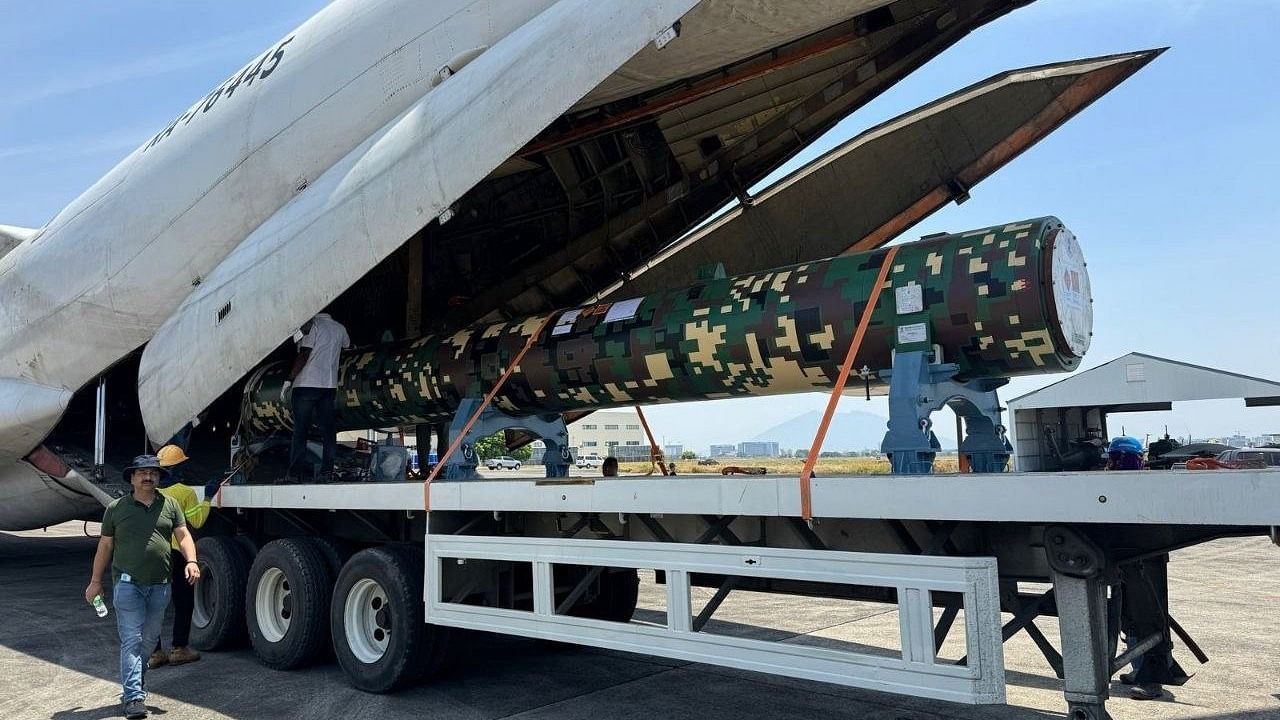
India delivers Brahmos missiles to the Philippines
Credit: X/@THE_SQUADR0N
On April 19, India delivered the first batch of the BrahMos missiles to the Philippines. India signed the defence deal in 2022 and at $375 million it was one of the largest deals. This deal also underscores the growing closeness between New Delhi and Manila, and also establishes India as a viable source of defence equipment and systems for the Southeast Asian countries.
There are some reports which highlight that while the BrahMos were being delivered, a Chinese WZ-7 drone was sighted around the West Philippine Sea. This underscores Beijing’s uneasiness with the transfer of missiles. The obvious point is that the missiles have the capacity to boost Manila’s defence capabilities and can bridge the existing gap between China and the Philippines.
Manila has become a prime actor in India’s Act East Policy. Last month during his visit to the Philippines External Affairs Minister S Jaishankar asserted that New Delhi respects Manila’s sovereignty. Predictably, Beijing asserted that third countries should not interfere in its affairs with the Philippines. India had also sent the ICGS Samudra Paheredar, a pollution control vessel, to the Philippines in March 2023. Such visits are a step in strengthening bilateral co-operation with the Philippines’ coast guards.
In addition to India, on April 11, the United States, Japan, and the Philippines concluded the first trilateral summit. All three leaders agreed that “….three countries would oppose and resolutely respond to any attempts by People’s Republic of China (PRC) to unilaterally change the status quo by force in the South China Sea and the East China Sea”.
A joint maritime drill by Washington and Manila started on April 22 and will go up to May 10 in the South China Sea. These are the 39th ‘Balikatan’ or shoulder-to-shoulder exercise. This has irked Beijing, which has not shied away from sounding warnings. It is expected that China may remain up close for recognisance as the exercises may move into waters which is claimed by Beijing.
Chinese foreign ministry spokesperson Lin Jian said, “The Philippines should understand that drawing in countries outside the South China Sea to flex their muscles and stoke confrontation in the region will only intensify tensions and undermine regional stability”. Even Rodrigo Duterte, the former Philippine president close to Beijing, sounded a warning note that the “US will not die for us”.
On the economic front too, the Philippines is relooking at proposed Chinese investments. Recently, the US and Japan agreed to fund a freight railway initiative after the Philippines ended negotiations with China. This project is worth $868 million. American firms are expected to invest around $1 billion in the Philippines.
The Philippines under Ferdinand Marcos has become a major challenge for the Chinese aggressive ambitions in the South China Sea. Since taking office, he has changed the direction of Manila’s foreign policy, which is today appearing more independent and also one which is looking to get closer to the US, Japan, and India. The path adopted by Manila under Marcos shows its aspirations to move away from Chinese domination, and carve its own foreign and regional policy.
This is a good opportunity for New Delhi to further cement its relationship. The success of the BrahMos deal will raise India’s position in the region. However, this will be marked by challenges from Beijing as China is not comfortable with any catalyst that can change the power balance in the region. Beijing is irked that New Delhi and Washington have managed to make inroads in the South China Sea. A region where Beijing has enjoyed leverage as the big power.
However, it is becoming quite apparent that the smaller nations are looking for ways to mitigate growing Chinese aggression under Xi Jinping. The rise of nationalism and the position of no compromise and space for the smaller regional neighbours has created new challenges for the Southeast Asian nations. China is their largest economic partner and believes it has the leverage and clout.
India needs to use this situation to push the narrative of a peaceful Indo-Pacific and also look for new ways to assert renewed diplomatic focus. China has been comfortable extending its diplomatic net, especially in South Asia, however, it does not like to face a similar challenge in its backyard.
(Gunjan Singh is Associate Professor, OP Jindal Global University.)
Disclaimer: The views expressed above are the author's own. They do not necessarily reflect the views of DH.